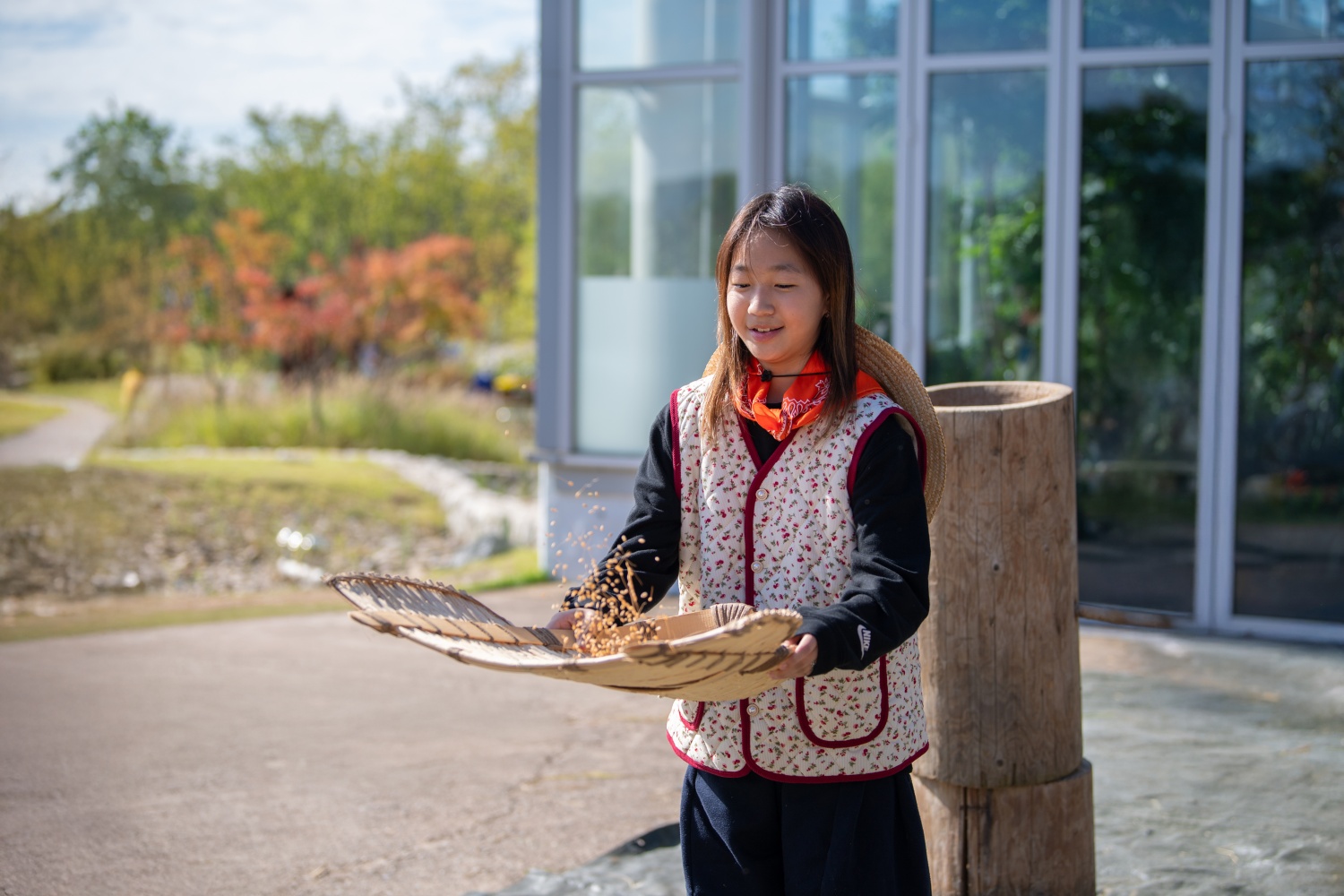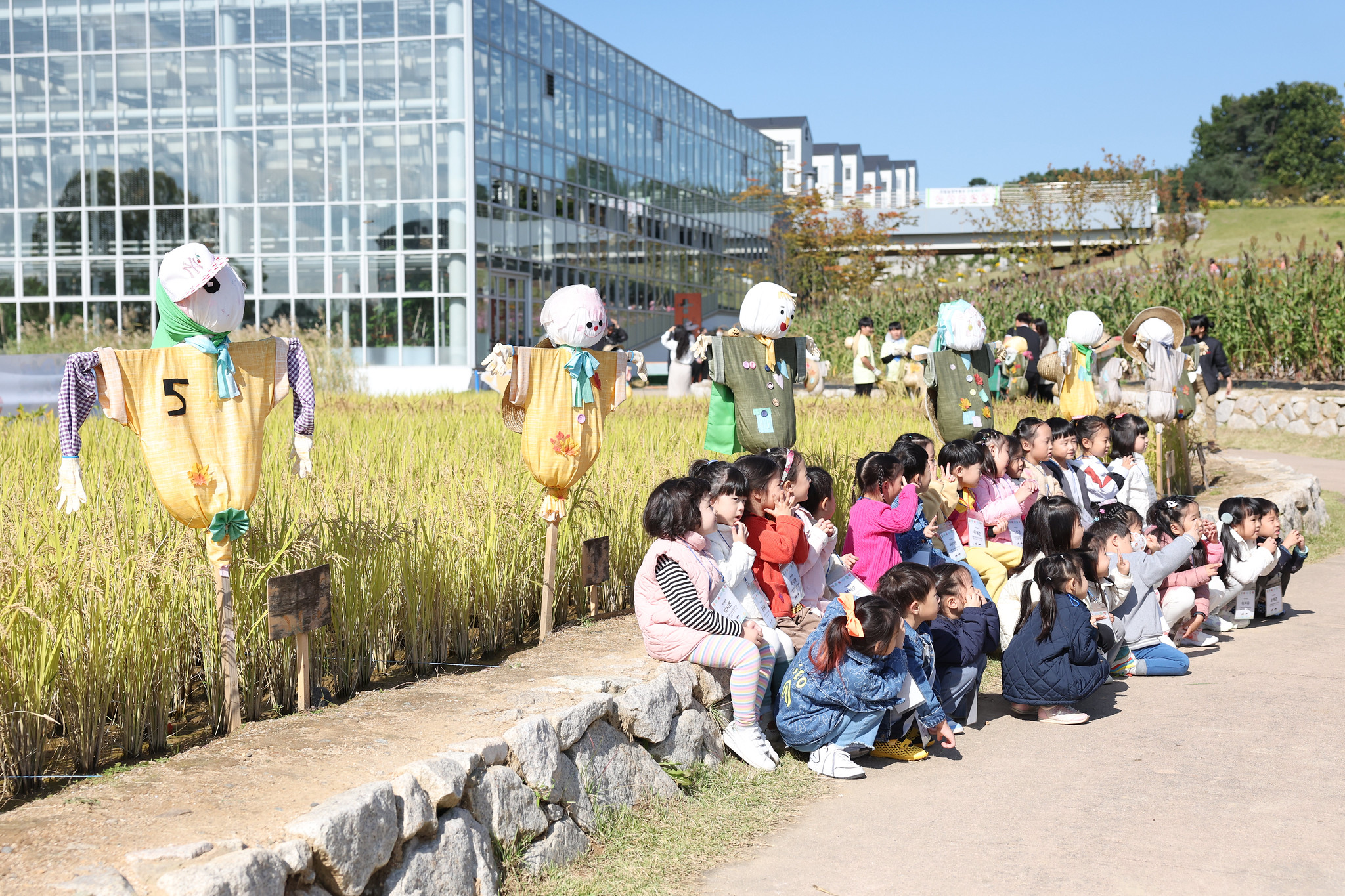By Charles Audouin
Video = Park Daejin
"When did the rice I planted grow so tall?"
Under a clear fall sky on the morning of Oct. 22, the outdoor terraced rice paddies of the National Agricultural Museum of Korea in Suwon, Gyeonggi-do Province, were filled with students from Guun Elementary School for an interactive event for rice harvesting. Quite a few of them shouted in excitement after seeing the rice plants they had sown in spring appear grown, lush and abundant.
Soon the harvesting began. The children carefully moved their feet and held their sickles on the muddy paddies, which were still wet from rain a week earlier. Initially clumsy, each student got better at the task with each swing of the sickle and most importantly, learned about the dedication of farmers that goes into every grain of rice.
"I learned that rice stalks aren't as easy to cut as I thought and that you need skills to use a sickle properly," student Eo Jun-seo said, "After harvesting the rice, I better understood the difficulties of farming and realized I shouldn't waste food anymore."
The sounds of positive music echoed across the paddies where the event was held, coming from the procession and performance of Hongseong Gyeolseong nongyo, a type of traditional folk music and field song designated an Intangible Cultural Heritage of Chungcheongnam-do Province. Dating back to prehistoric times, this tune for farmers in the township of Gyeolseong-myeon in Hongseong-gun County, Chungcheongnam-do, is traditionally sung while planting rice, weeding or threshing.
"We got a boost from singing folk songs together while harvesting rice," Eo added. "It would've been much harder if we didn't talk."

A student from Guun Elementary School in Suwon, Gyeonggi-do Province, on Oct. 22 uses a rice winnowing basket at an interactive event for rice harvesting at the terraced rice paddies of the National Agricultural Museum of Korea in Suwon. (National Agricultural Museum)
The students also tried traditional threshing methods. They learned the old process of rice harvesting by putting bundles of rice stalks into a threshing machine to separate the grains, removing the outer husks with a mortar and pestle, and using a winnowing basket.
"Through this experience, we hope that both children and the public feel and understand what agriculture is all about," museum director Oh Kyung-Tae said. "We will keep holding traditional folk events including those of rice harvesting."
Opened in December 2022 in Suwon's Gwonseon-gu District, the museum is located in Seodun-dong, a neighborhood home to Chukmanje Reservoir, which Joseon Dynasty King Jeongjo had built in 1799 to promote agriculture.
The museum promotes the development of agriculture and rural areas through the collection and management of farming artifacts, training and interactive programs, and academic events. It is also preparing an exchange exhibition with the National Museum of Japanese History in Chiba, Japan.

Children on Oct. 22 take a group photo at the National Agricultural Museum of Korea in Suwon, Gyeonggi-do Province (Lee Jeongwoo)
caudouin@korea.kr